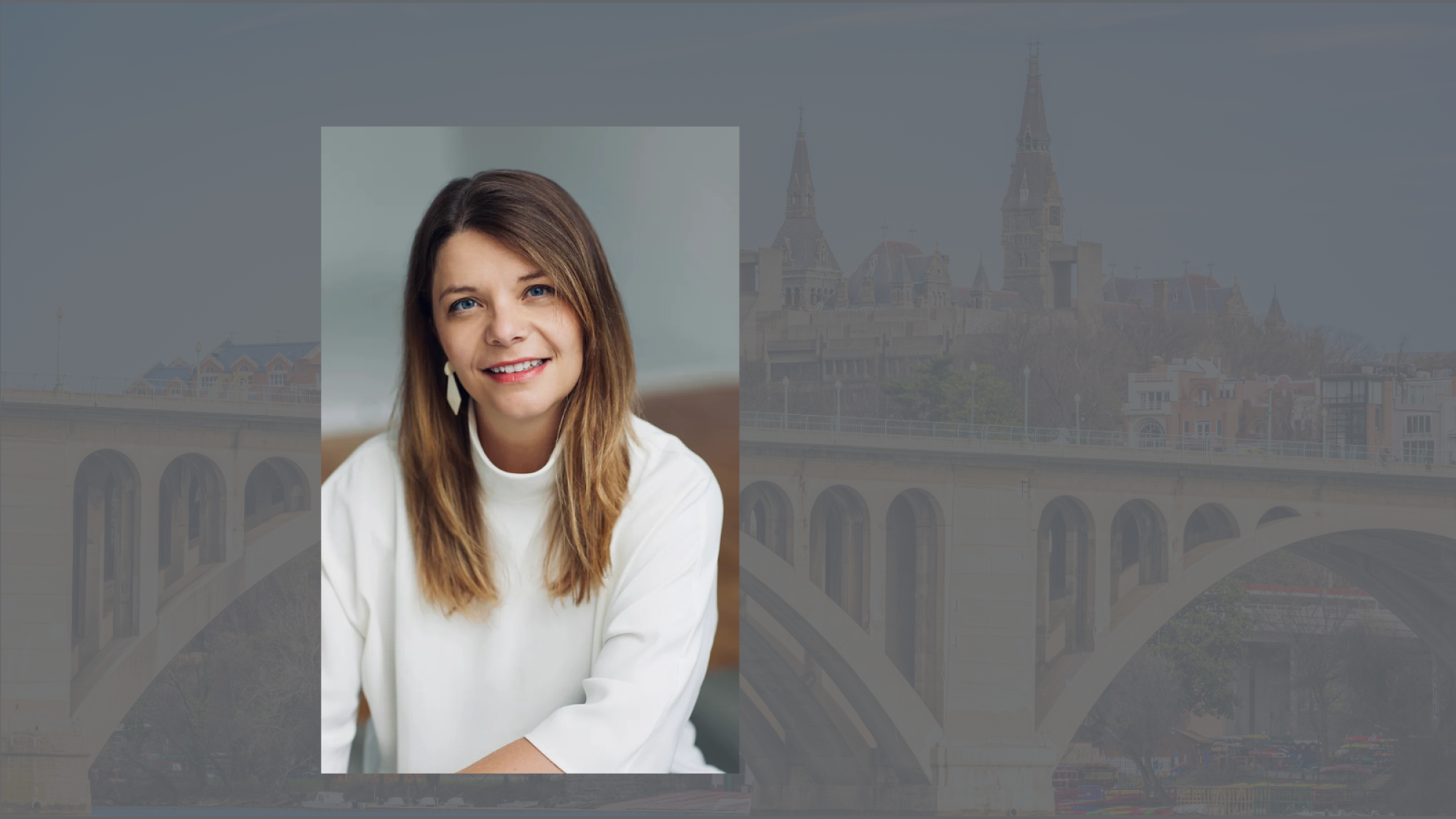For content creators on social media, the rule is: the bigger the audience, the better. More followers, more likes and more shares are widely acknowledged goals for building a loyal and devoted audience for your art, music, fashion, musings and views. Against this landscape, what artist would purposefully limit their audience by half the population?
SFS Professor Jessica Roda explores this question and deeply engages in examining the creative lives of ultra-Orthodox women in her new book, “For Women and Girls Only” (NYU Press 2024). She will discuss the book at length in a book event from 5-7 pm, Tuesday, December 10, at the Mortara Center alongside a panel that includes film director Yael Luttwak, actor/artist Malky Goldman and professors Jacques Berlinerblau and K. S. Batmanghelichi. In advance of the event, Roda, an anthropologist and ethnomusicologist, answered a few questions about her book and how the women she met use technology to expand the boundaries of what is possible when one’s work truly is “for women and girls only.”
Q. In your book, you explore the experiences of ultra-Orthodox women performing in music videos, in addition to other collective and individual performance opportunities. Ultra-Orthodox beliefs require that such performances by women be for other women and girls only, and you spoke with musicians and singers who willingly restrict the audience allowed to see and hear them. How does this idea conflict with secular feminist ideas about agency? How does this idea conflict with secular ideas about creativity, individuality and fame?
A. My book argues that ultra-Orthodox women are developing diverse strategies to gain visibility and navigate agency, going beyond secular liberal models that typically involve showing one’s face and voice to all genders. By exploring the paradox of religious women balancing modesty with the need for public presence in the arts, I demonstrate that these women employ various approaches to make their art accessible while adhering to their community’s modesty norms. This study reveals multiple models at play—each offering distinct, and sometimes conflicting, approaches to women’s discourse and practices within the ultra-Orthodox community. With greater access to technology and the democratization of music and film production, many observant Jewish women have embraced new forms of creativity and fame from the comfort of their homes. These models skillfully balance individuality with collective expectations according to the norms of modesty, creating a unique market and industry for entertainment in music and film. This industry offers alternative paths to celebrity, the development of copyrights and music production.
Q. How has social media specifically, and technology more generally, allowed these women to find large, exclusively female, audiences for their performances?
A. Technology has significantly impacted the music and film productions created by ultra-Orthodox women. First, it has enabled this niche and very private entertainment scene to be transformed into a market and industry—and even thrive. The democratization of music and film production through the Internet allows the most religiously conservative women, who prefer not to interact with men, to produce music and films entirely from the comfort of their homes, with no need for direct contact with men or the outside world. This has led to what I describe as an ‘informal market’, where these artists’ faces often remain unseen, and their full names may go unmentioned. Their work circulates globally through private networks—such as phone lines, community mediators, and school or summer camp directors—enabling connections across communities and locations without relying on social media.
Additionally, for women seeking an alternative model of entertainment that features women’s faces and voices but restricts access to women and girls, social media offers a vital platform. These women place the responsibility on men to refrain from accessing this content online, allowing them to produce high-quality material that rivals the male-dominated industry, expands their audience and presents a new model of womanhood. While the broader film and music industries—including the substantial ‘kosher’ production field within Orthodox Jewish circles—are largely managed by men, these women are carving out space for female-driven content within this cultural framework.
Q. How have these artists used their activities to expand, rather than contract, the possible roles for women within this particular type of conservative religious community—ultra-Orthodox Jewish communities including Hasidic and Litvish/Yeshivish communities?
A. Female artists in these communities are both challenging and reinforcing traditional models of womanhood, fashion and sound. They are creating new ways to make a living by teaching, producing and performing music—not only to reinforce Orthodoxy by offering new models of expression but also for physical and mental well-being. Additionally, by producing music videos that align with the sound and performative aesthetics of kosher male Orthodox pop productions, ultra-Orthodox women artists are normalizing voices and styles similar to those of North American pop stars while adapting the concept of celebrity to balance individual aspirations with collective needs. Their online presence has also allowed them to build a trans-local community of artists and fans worldwide.
Q. Do you see analogies to these experiences for women artists within other conservative religious communities?
A. In writing this book, I draw on literature about conservative Christian and Muslim women, acknowledging that there is more to explore across other religious traditions; however, my focus is on the Abrahamic faiths. This creates an ongoing dialogue with this body of literature throughout the book. Nevertheless, Jewish ultra-Orthodoxy presents a unique case, marked by its isolation from broader society and the development of distinct models and economies within some of North America’s most liberal metropolises, like Montreal and New York. This uniqueness is further enriched by the complex history and tradition of musical performance within these religious Jewish circles (Hasidic and Litvish), where performance holds a multifaceted role in cultural and religious life.
